
Monster Hunter Tri for the Wii is a monster hunters dream, featuring tons of fearsome beasts for Wii owners to slay when the game hits later today!
Here are is an overview of some of the most dangerous monsters you will encounter in the game along with their official bio’s, artwork and videos that detail each one.
Agnaktor
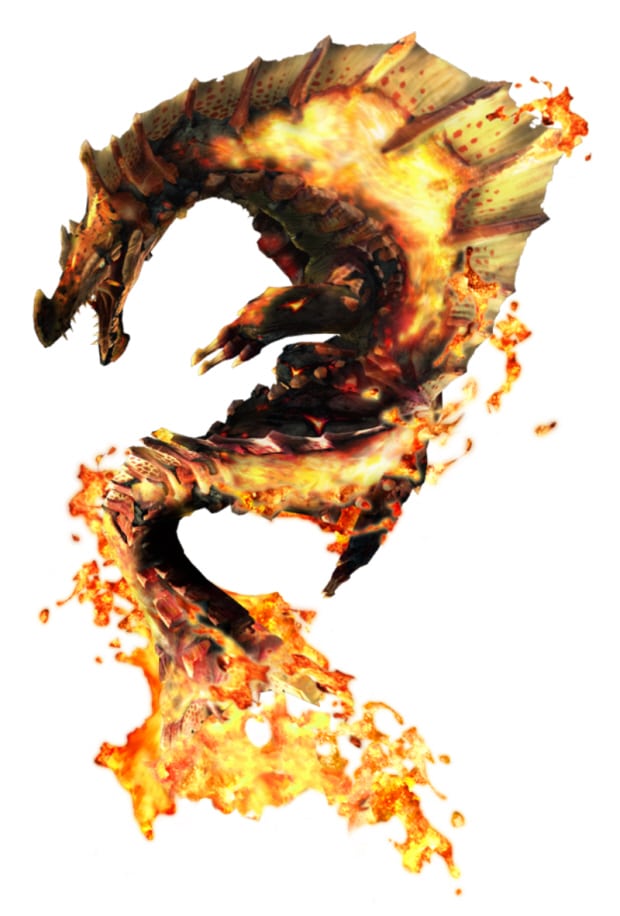
Also known as fire-pike wyverns, Agnaktor use their tough beaks and great strength to burrow through rock… and sometimes even cave ceilings. Encrusted with hardened lava that can soften from the heat when they spit magma or burrow.
Barioth
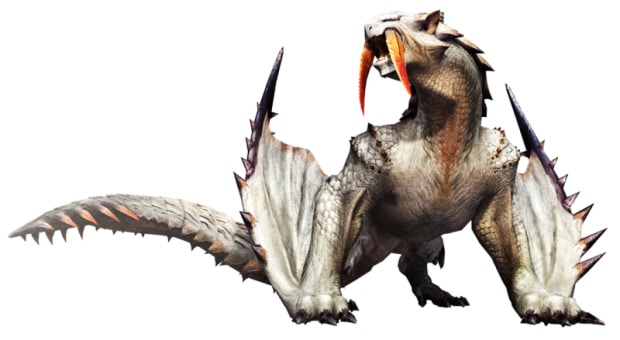
Wyverns that rule the eternally frozen Tundra. Barioth use their huge tusks and spiked scales to move freely atop the slippery ice; this ability makes them very difficult to keep up with.
Barroth
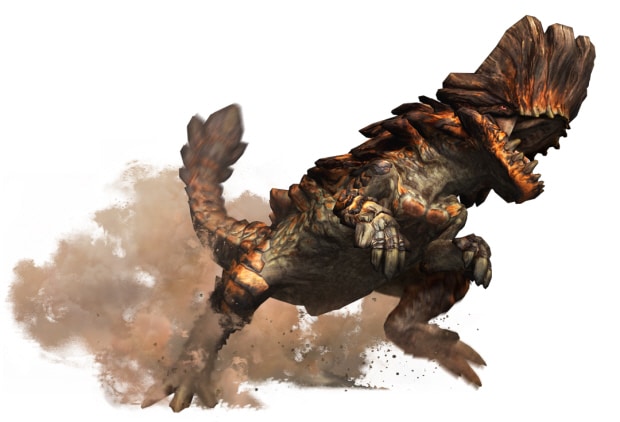
Barroth usually remain beneath the mud, perhaps to shield themselves from heat; they are even known to fling mud to attack. They will charge in a frenzy at anything that disturbs their bogs.
Ceadeus
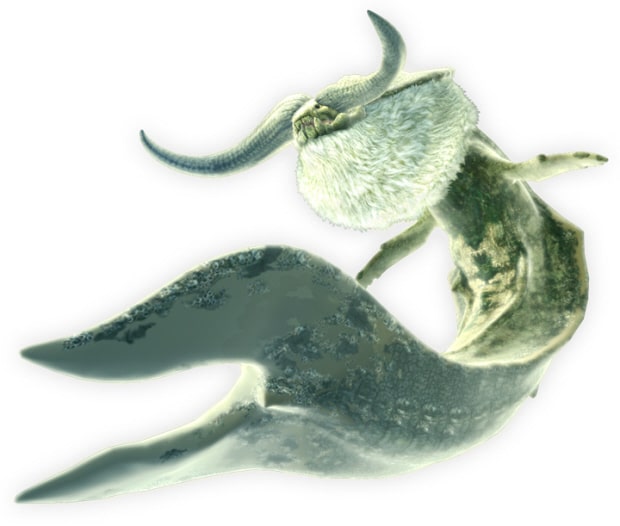
Legendary elder dragons known as both “shining giants of the depths” and “great sea dragons.” Not confirmed to exist until recently.
Delex
Carnivorous monsters that inhabit deserts. Delex always travel in schools of five or six. When near large monsters on the hunt, they will attempt to surround the prey and scavenge feed. Known to flee if other Delex are injured. A sonic bomb will be of help if a school attacks you.
Diablos
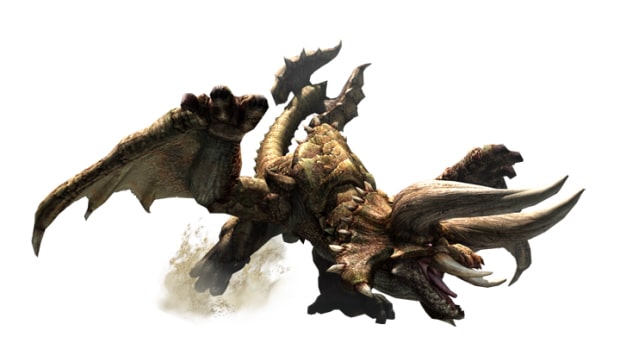
Wyverns feared as desert tyrants. Extremely territorial, Diablos attack invaders with blind aggression. Highly sensitive to sound, perhaps because they frequently travel beneath the sand. Know to feed on cacti.
Gigginox
A strange beast with a pale white body, red markings on it’s underbelly and wing bottoms, and purple markings that luminesce in the darkness. They’re commonly found in the caves of the Tundra area, waiting for prey by hanging on the ceiling in the black. Using extra senses, they track potential prey by detecting their body heat. Once the Gigginox attacks it stuns the prey and poisons it, and let’s it slowly freeze in cold depths of the caves. It’s also extremely fertile, laying innumerable amounts of eggs. The purple egg sacks it lays will continuously release larvae, called Giggi.
Gobul
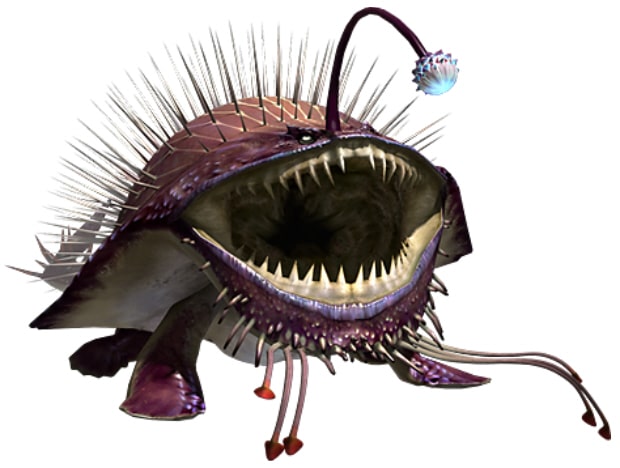
Monster with strong camouflage skills and powerful neurotoxins. Poor swimmers, Gobul conceal themselves and lure prey by imitating plants with their barbles. Can reportedly swallow Epioth whole. They love frogs.
Great Baggi
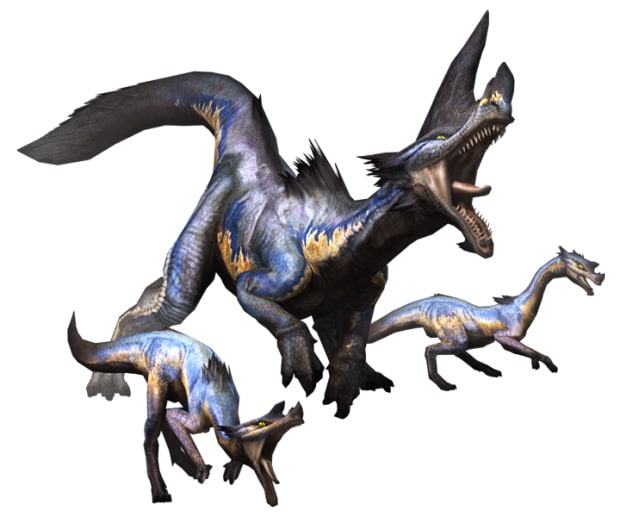
Carnivorous bird wyverns like the Jaggi. Noted for their projecting cranial crests and bluish-white skin that’s adapted to snow. Great Baggi craftily command other Baggi to surround their prey and stun them with a tranquilizing fluid. Regular Baggi meanwhile are highly intelligent, carnivorous bird wyverns that hunt in packs. Noted for their blue scales and sharp glare. Baggi are feared for their ability to secrete a tranquilizing fluid; it can knock even humans out for several seconds.
Jaggi and Jaggia
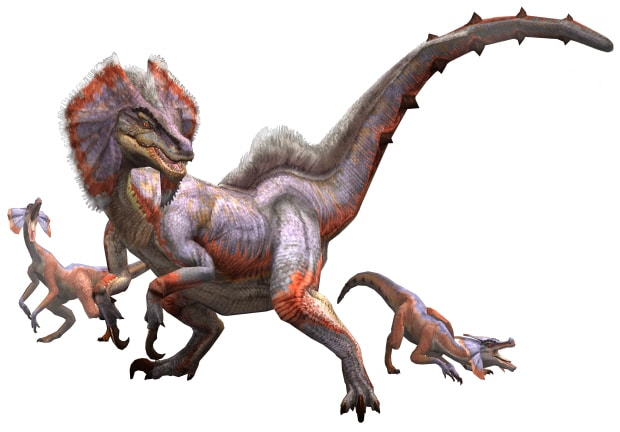
Jaggi: A highly social, carnivorous Bird Wyvern that live in large packs. Young Jaggi males hunt in groups, attacking much larger animals. Current research suggests they operate under orders from an alpha male. They are aggressive, but wary of fire. Jaggia: Female Jaggi that stay in groups, Jaggia generally cluster around the nest to defend it and raise whelps. Smaller than mature males, but larger and tougher than the countless young males. Jaggia also operate under an alpha’s orders.
Jhen Mohran

Rare ore can be mined from these enormous dragons’ backs (they are the size of a “whale” and carry that nickname); thus they are considered prosperity symbols. They swallow vast amounts of organic material and are always surrounded by scavenging Delex, which sailors use to locate them.
Lagiacrus
Known as the sea wyvern, the Lagiacrus are at the top of the food chain. Feared by sailors as the “Lords of the Seas”, they store enough electricity in their spinal organs to make the oceans surge. Occasionally seen resting on land.
Qurupeco
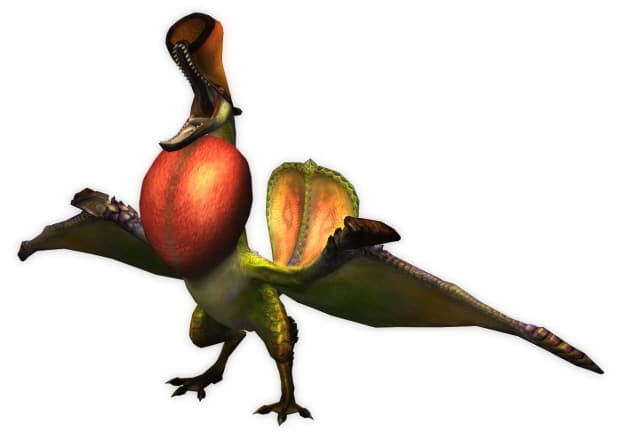
Brute wyverns with unique plumage. Well known for using their thoracic vocal organs to imitate other monsters’ calls, first summoning them, then using the distraction to flee. Spits a dangerous combustible body fluid.
Rathalos

Terrible wyverns called the “Kings of the Skies”. Together with Rathian, they stake wide territories centered around their nests. Rathalos descend on invaders from the sky, attacking with poison claws and breath of fire.
Rathian

Fire-breathing female wyverns, also known as “Queens of the Land.” With powerful legs and poison-secreting tails, they hunt mainly on the ground. Sometimes seen preying as a couple, Rathian cooperate well with Rathalos.
Rhenoplos
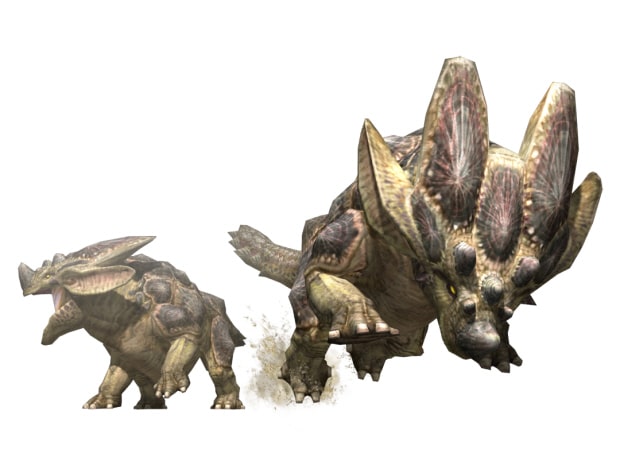
Extremely territorial herbivores with poor vision, but acute hearing. Rhenoplos will doggedly pursue any nearby target they sense. They often collide into boulders, perhaps because they cannot easily stop once they begin to run. Be ready to dodge!
Royal Ludroth
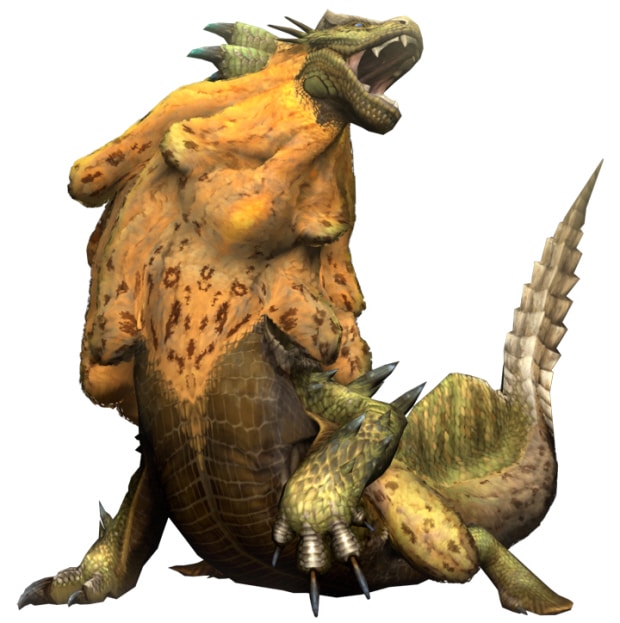
Royal Ludroth use their sponge like neck scales to absorb water and prevent drying out on land. Once the sponge loses moisture, they attempt to re-enter the water. They also spew mucus to trip up their prey.
Uragaan

Brute wyverns that feed on ore, using their mighty jaws to crush bedrock to powder. They cleverly affix rocks and ore to themselves with lava, then spread them about, using vibration to make them explode. Will sometimes drop ore.
Uroktor
Leviathans that inhabit volcanoes. Noted for swarming around larger monsters’ kills in order to feed. Uroktor rarely hunt for themselves, but stab upward at prey from the ground when they do. Known for being highly aggressive.
